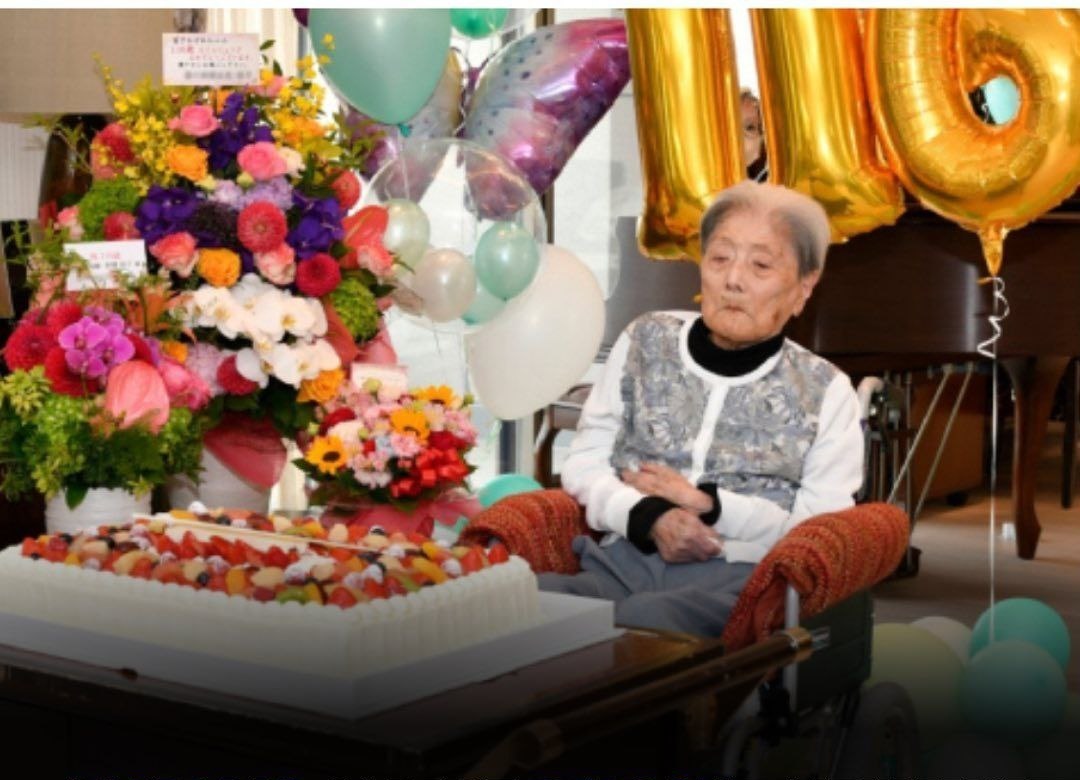e subpoena pnp
2025-01-13 2025 European Cup e subpoena pnp
News
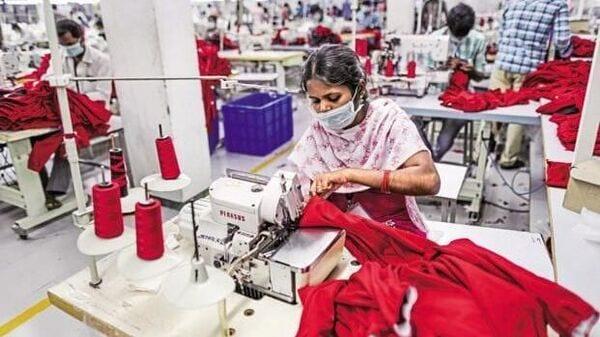 superph club login
superph club login
Boopie Miller's 24 points spark SMU to a 98-82 win over Longwood in nonconference finale
Tottenham January transfer briefing: who are they after, what do they need and who might leave? Our expert reveals which positions Spurs will look to strengthen next month Join Mail+ for more exclusive scoops, in-depth reporting and analysis from inside the Tottenham camp By MATT BARLOW Published: 07:00 EST, 29 December 2024 | Updated: 07:00 EST, 29 December 2024 e-mail View comments There may be no Premier League team more in need of new recruits this month than Tottenham , who have been blighted by injuries particularly in defence. Ange Postecoglou promised silverware in his second season just as he usually brings to a club, and while they have made a cup semi-final for the first time in three years, the Australian may need some reinforcements to go any further - not least as their last-four opponents are Liverpool . There's also a Europa League campaign to stock up for with Spurs just outside the top eight of the league table, a place in which would guarantee them safe passage to the last 16, and an FA Cup journey that begins at non-League Tamworth next week. So who might arrive and where to bolster Spurs' ranks? And will their biggest addition be the massed ranks occupying the treatment room? Here, as part of our series looking at Premier League clubs' January transfer plans, our Spurs expert Matt Barlow answers the five big questions. Ange Postecoglou promised a trophy in his second season at Tottenham but needs signings There may be no Premier League team more in need of new recruits this month than Spurs Spurs are 12th in the Premier League but have a Carabao Cup semi-final to look forward to 1. What do Tottenham need? Most urgently, they could do with some more firepower up front and a defender. They might also look at short term cover at goalkeeper and centre half. Although much will depend on the recovery assessments of their injuries in the next few weeks. Postecoglou talks like someone hedging his bets because he hopes players such as Micky van de Ven, Cristian Romero and Richarlison will be fit again soon. But then can he rely on them all staying fit until the end of the season? Probably not with Tottenham's current injury record. Postecoglou wants more depth in the squad. Cover and options from the bench, which is likely to mean creative loan deals and/or continued investment in young talent to develop in the mould of Archie Gray, Lucas Bergvall and Wilson Odobert, rather than big money splurges to improve the first team. Postecoglou is hopeful Micky van de Ven and Cristian Romero will be fit again soon Spurs may continue to invest in young talent to develop in the mould of Archie Gray 2. Do they have money to spend? There are no great PSR concerns at Tottenham but the watchword regarding transfers through recent press conferences with Postecoglou has been 'discipline'. There have also been warnings about it being trickier than usual this year because of the new format in Europe and with two ties to play in the Champions League and Europa League there are clubs holding players when they might have been prepared to sell or loan had they been out of European competition. Beyond this, with no summer international tournament there is not the same pressure from individual players to make moves to win places in the squads. I'd expect Spurs to perform as they have in the last couple windows, looking primarily at young players and short-terms solutions with bigger investments and any potential improvements on the first team more likely to wait until the summer 2025. Daniel Levy has no great PSR concerns but the watchword regarding transfers is 'discipline' 3. Which players are they interested in? With Spurs, it's easier to talk about those who they already have on the way, having wrapped up a pair of signings that will give them a boost in 2025. Yang Min-Hyeok is one player who will arrive and be added to the squad. Yang is an 18-year-old winger, who scored a dozen goals and won the Young Player of the Year award in South Korea's K-League last season. Tottenham signed him from Gangwon in July but agreed to let him complete the K-League season before making the switch to London in mid-December, and he will register in the New Year. Luka Vuskovic is a 17-year-old central defender signed from Hadjuk Split in 2023. Vuskovic is 6ft 4in tall and on loan in Belgium at Westerlo, for whom he has been ever-present and scored six goals. He is due to join Spurs next summer and the club's raft of emerging talent is one of the reasons they will not commit to a rash of signings of experienced players on long expensive contracts in the same positions. Yang Min-Hyeok, an 18-year-old winger signed from South Korea, has already arrived at Spurs Promising defender Luka Vuskovic (centre) is due to join next summer from Hadjuk Split 4. Who might leave? Sergio Reguilon is out of contract at the end of the season and will be sold if they can find a buyer. Even a massive injury crisis has not resurrected his Tottenham career. It was his first Spurs appearance for two years and eight months when he came off the bench in the 89th minute of the Carabao Cup quarter-final against Manchester United in December. Richarlison if they could raise a decent fee but that will be harder than ever after his absence through the first half of the season. He rejected a move to Saudi Arabia in the summer. Timo Werner is another option, if they can negotiate out of the loan deal with RB Leipzig and bring in a replacement. Richarlison could leave if Spurs can secure a decent fee, but this may prove tricky Timo Werner is another option should Spurs negotiate out of the loan deal with RB Leipzig 5. What unexpected moves should fans keep an eye on? A shrewd move for that old favourite Internal Solutions. Mikey Moore is a precocious talent on the wing at 17, but almost as soon as he burst onto the scene this season he picked up a virus and has not been seen since the end of October. He should return imminently and will be a vital injection of energy and speed to a squad that has been out on its feet while ailments have prevented Postecoglou from rotating just when the fixture calendar got its most congested. Other young academy products Will Lankshear and Alfie Dorrington will likely get their chances if the injury crisis persists, though they are not as highly thought of. Odobert, the £25m summer signing, should finally be able to make his mark soon when he returns from a hamstring injury that has kept him out even longer than Moore. Tottenham Hotspur Transfers Share or comment on this article: Tottenham January transfer briefing: who are they after, what do they need and who might leave? e-mail Add commentConnor Stallions' First Post After Michigan Upset Ohio State in Columbus
ampueroleonardo/iStock Unreleased via Getty Images The S&P 500 Dividend Aristocrats Index contains 66 dividend growth [DG] stocks called the Dividend Aristocrats. With a few exceptions, the Dividend Aristocrats are S&P 500 companies with higher dividend payouts every year for 25 or more years. Analyst’s Disclosure: I/we have a beneficial long position in the shares of PG,ADP,JNJ,CTAS,CVX,CB,AFL,GD,PEP,LOW,NEE,ITW,KO,APD,ABBV,MCD,BRO,ATO,TGT,O,ADM either through stock ownership, options, or other derivatives. I wrote this article myself, and it expresses my own opinions. I am not receiving compensation for it (other than from Seeking Alpha). I have no business relationship with any company whose stock is mentioned in this article. Seeking Alpha's Disclosure: Past performance is no guarantee of future results. No recommendation or advice is being given as to whether any investment is suitable for a particular investor. Any views or opinions expressed above may not reflect those of Seeking Alpha as a whole. Seeking Alpha is not a licensed securities dealer, broker or US investment adviser or investment bank. Our analysts are third party authors that include both professional investors and individual investors who may not be licensed or certified by any institute or regulatory body.BY MELISSA GOLDIN Social media users are misrepresenting a report released Thursday by the Justice Department inspector general’s office, falsely claiming that it’s proof the FBI orchestrated the Capitol riot on Jan. 6, 2021. Related Articles National News | Drones, planes or UFOs? Americans abuzz over mysterious New Jersey sightings National News | OpenAI whistleblower found dead in San Francisco apartment National News | Judge rejects an attempt by Trump campaign lawyer to invalidate guilty plea in Georgia election case National News | Texas’ abortion pill lawsuit against New York doctor marks new challenge to interstate telemedicine National News | US military flies American released from Syrian prison to Jordan, officials say The watchdog report examined a number of areas, including whether major intelligence failures preceded the riot and whether the FBI in some way provoked the violence. Claims spreading online focus on the report’s finding that 26 FBI informants were in Washington for election-related protests on Jan. 6, including three who had been tasked with traveling to the city to report on others who were potentially planning to attend the events. Although 17 of those informants either entered the Capitol or a restricted area around the building during the riot, none of the 26 total informants were authorized to do so by the bureau, according to the report. Nor were they authorized to otherwise break the law or encourage others to do so. Here’s a closer look at the facts. CLAIM: A December 2024 report released by the Department of Justice’s Office of the Inspector General is proof that the Jan. 6 Capitol riot was a setup by the FBI. THE FACTS: That’s false. The report found that no undercover FBI employees were at the riot on Jan. 6 and that none of the bureau’s informants were authorized to participate. Informants, also known as confidential human sources, work with the FBI to provide information, but are not on the bureau’s payroll. Undercover agents are employed by the FBI. According to the report, 26 informants were in Washington on Jan. 6 in connection with the day’s events. FBI field offices only informed the Washington Field Office or FBI headquarters of five informants that were to be in the field on Jan. 6. Of the total 26 informants, four entered the Capitol during the riot and an additional 13 entered a restricted area around the Capitol. But none were authorized to do so by the FBI, nor were they given permission to break other laws or encourage others to do the same. The remaining nine informants did not engage in any illegal activities. None of the 17 informants who entered the Capitol or surrounding restricted area have been prosecuted, the report says. A footnote states that after reviewing a draft of the report, the U.S. attorney’s office in Washington said that it “generally has not charged those individuals whose only crime on January 6, 2021 was to enter restricted grounds surrounding the Capitol, which has resulted in the Office declining to charge hundreds of individuals; and we have treated the CHSs consistent with this approach.” The assistant special agent in charge of the Washington Field Office’s counterterrorism division told the inspector general’s office that he “denied a request from an FBI office to have an undercover employee engage in investigative activity on January 6.” He, along with then-Washington Field Office Assistant Director in Charge Steven D’Antuono, said that FBI policy prohibits undercover employees at First Amendment-protected events without investigative authority. Many social media users drew false conclusions from the report’s findings. “JANUARY 6th WAS A SETUP!” reads one X post that had received more than 11,400 likes and shares as of Friday. “New inspector general report shows that 26 FBI/DOJ confidential sources were in the crowd on January 6th, and some of them went into the Capitol and restricted areas. Is it a coincidence that Wray put in his resignation notice yesterday? TREASON!” The mention of Wray’s resignation refers to FBI Director Christopher Wray’s announcement Wednesday that he plans to resign at the end of President Joe Biden’s term in January. Other users highlighted the fact that there were 26 FBI informants in Washington on Jan. 6, but omitted key information about the findings of the report. These claims echo a fringe conspiracy theory advanced by some Republicans in Congress that the FBI played a role in instigating the events of Jan. 6, 2021, when rioters determined to overturn Republican Donald Trump’s 2020 election loss to Democrat Joe Biden stormed the Capitol in a violent clash with police. The report knocks that theory down. Wray called such theories “ludicrous” at a congressional hearing last year. Asked for comment on the false claims spreading online, Stephanie Logan, a spokesperson for the inspector general’s office, pointed The Associated Press to a press release about the report. In addition to its findings about the the FBI’s involvement on Jan. 6, the report said that the FBI, in an action its now-deputy director described as a “basic step that was missed,” failed to canvass informants across all 56 of its field offices for any relevant intelligence ahead of time. That was a step, the report concluded, “that could have helped the FBI and its law enforcement partners with their preparations in advance of January 6.” However, it did credit the bureau for preparing for the possibility of violence and for trying to identify known “domestic terrorism subjects” who planned to come to Washington that day. The FBI said in a letter responding to the report that it accepts the inspection general’s recommendation “regarding potential process improvements for future events.”Get ready for a college football bowl season like you’ve never seen. It’s the first year of the expanded 12-team College Football Playoff to determine the national champion, with first-round games kicking off Friday, December 20. In the new format, the top four conference champions (Oregon, Georgia, Arizona State and Boise State) receive a first-round bye and automatic entry into the quarterfinals. The remaining eight teams play in the four-game first round, with matchups held at the home stadiums of the higher-ranked participants. The “New Year’s Six” bowls serve as the quarterfinals and semifinals, with the national championship decided Monday, January 20, at Mercedes-Benz Stadium in Atlanta. Of course, there’s still plenty of college football postseason action through early January that doesn’t involve the national championship chase. The parade of bowl games begins Saturday, December 14, with the Cricket Celebration Bowl in Atlanta. A great tradition continues in Landover, Maryland, as the Navy Midshipmen take on the Army Black Knights Saturday on CBS at 3/2c. Later on Saturday, the Heisman Trophy is presented to the season’s most outstanding player in a ceremony on ESPN at 8/7c. Finalists are Oregon QB Dillon Gabriel, Colorado WR/CB Travis Hunter, Boise State RB Ashton Jeanty (pictured above) and Miami QB Cam Ward. Here’s your complete lineup of College Football Playoff games and other bowl matchups: All times Eastern/Central. CFP First Round Friday, December 20 No. 10 Indiana at No. 7 Notre Dame, ABC/ESPN, 8/7c Saturday, December 21 No. 11 SMU at No. 6 Penn State, noon/11a c, TNT/Max No. 12 Clemson at No. 5 Texas, 4/3c, TNT/Max No. 9 Tennessee at No. 8 Ohio State, 8/7c, ABC/ESPN CFP Quarterfinals Tuesday, December 31 Vrbo Fiesta Bowl (Glendale, Arizona): TBA vs. No. 3 Boise State, (ESPN) Wednesday, Jan. 1 Chick-fil-A Peach Bowl (Atlanta): TBA vs. No. 4 Arizona State, 1/noon c, ESPN Rose Bowl (Pasadena, California): TBA vs. No. 1 Oregon, 5/4c, ESPN Allstate Sugar Bowl (New Orleans): TBA vs. No. 2 Georgia, 8:45/7:45c, ESPN CFP Semifinals Thursday, January 9 Capital One Orange Bowl (Miami, Florida): TBA vs. TBA, 7:30/6:30c, ESPN Friday, January 10 Goodyear Cotton Bowl Classic (Arlington, Texas): TBA vs. TBA, 7:30/6:30c, ESPN CFP National Championship Game Monday, January 20 National Championship (Atlanta): TBA vs. TBA, 7:30/6:30c, ESPN Saturday, December 14 Cricket Celebration Bowl (Atlanta): Jackson State vs. South Carolina State, noon/11a c, ABC IS4S Salute to Veterans Bowl (Montgomery, Alabama): South Alabama vs. Western Michigan, 9/8c, ESPN Tuesday, December 17 Scooter’s Coffee Frisco Bowl (Frisco, Texas): Memphis vs. West Virginia, 9/8c, ESPN Wednesday, December 18 Boca Raton Bowl (Boca Raton, Florida): Western Kentucky vs. James Madison, 5:30/4:30c, ESPN Art of Sport LA Bowl (Inglewood, California): Cal vs. UNLV, 9/8c, ESPN Thursday, December 19 R+L Carriers New Orleans Bowl (New Orleans): Georgia Southern vs. Sam Houston, 7/6c, ESPN2 Friday, December 20 StaffDNA Cure Bowl (Orlando, Florida): Ohio vs. Jacksonville State, noon/11a c, ESPN Union Home Mortgage Gasparilla Bowl (Tampa, Florida): 3:30/2:30c, ESPN Monday, December 23 Myrtle Beach Bowl (Conway, South Carolina): Coastal Carolina vs. UTSA, 11a/10a c, ESPN Famous Idaho Potato Bowl (Boise, Idaho): Northern Illinois vs. Fresno State, 2:30/1:30c, ESPN Tuesday, December 24 Hawai’i Bowl (Honolulu): South Florida vs. San José State, 8/7c, ESPN Thursday, December 26 GameAbove Sports Bowl (Detroit): Pittsburgh vs. Toledo, 2/1xc, ESPN Rate Bowl (Phoenix): Rutgers vs. Kansas State, 5:30/4:30c, ESPN 68 Ventures Bowl (Mobile, Alabama): Arkansas State vs. Bowling Green, 9/8c, ESPN Friday, December 27 Lockheed Martin Armed Forces Bowl (Fort Worth, Texas): Oklahoma vs. Navy, noon/11a c, ESPN Birmingham Bowl (Birmingham, Alabama): Georgia Tech vs. Vanderbilt, 3:30/2:30c, ESPN AutoZone Liberty Bowl (Memphis, Tennessee): Texas Tech vs. Arkansas, 7/6c, ESPN DirecTV Holiday Bowl (San Diego): Syracuse vs. Washington State, 8/7c, Fox SRS Distribution Las Vegas Bowl (Las Vegas): Texas A&M vs. USC, 10:30/9:30c, ESPN Saturday, December 28 Wasabi Fenway Bowl (Boston): UConn vs. North Carolina, 11a/10a c, ESPN Bad Boy Mowers Pinstripe Bowl (Bronx, New York): Boston College vs. Nebraska, Noon/11a c, ABC Isleta New Mexico Bowl (Albuquerque, New Mexico): Louisiana vs. TCU, 2:15/1:15c, ESPN Pop-Tarts Bowl (Orlando, Florida): Iowa State vs. Miami, 3:30/2:30c, ABC Snoop Dogg Arizona Bowl (Tucson, Arizona): Miami (Ohio) vs. Colorado State, 4:30/3:30c, The CW Go Bowling Military Bowl (Annapolis, Maryland): East Carolina vs. NC State, 5:45/4:45c, ESPN Valero Alamo Bowl (San Antonio): BYU vs. Colorado, 7:30/6:30c, ABC Radiance Technologies Independence Bowl (Shreveport, Louisiana): Marshall vs. Army, 9:15/8:15c, ESPN Monday, December 30 TransPerfect Music City Bowl (Nashville, Tennessee): Iowa vs. Missouri, 2:30/1:30c, ESPN Tuesday, December 31 ReliaQuest Bowl (Tampa, Florida): Alabama vs. Michigan, noon/11a c, ESPN Tony the Tiger Sun Bowl (El Paso, Texas): Louisville vs. Washington, 2/1c, CBS Cheez-It Citrus Bowl (Orlando, Florida): South Carolina vs. Illinois, 3/2c, ABC Kinder’s Texas Bowl (Houston): Baylor vs. LSU, 3:30/2:30c, ESPN Thursday, January 2 TaxSlayer Gator Bowl (Jacksonville, Florida): Duke vs. Ole Miss, 7:30/6:30c, ESPN Friday, January 3 SERVPRO First Responder Bowl (Dallas): North Texas vs. Texas State, 4/3c, ESPN Duke’s Mayo Bowl (Charlotte, North Carolina): Minnesota vs. Virginia Tech, 7:30/6:30c, ESPN Saturday, January 4 Bahamas Bowl (Nassau, Bahamas): Buffalo vs. Liberty, 11a/10a c, ESPN2 More Headlines: College Football Playoff & Bowl Game TV Schedule 2024 How Will ‘Blue Bloods’ End for Each Character? Our Theories ‘Dexter: Original Sin’ Creator Reveals How Dexter Survived ‘New Blood’ & Will Return for ‘Resurrection’ ‘The Night Agent’ Adds Jennifer Morrison, Stephen Moyer & More for Season 3 ‘Dexter: Resurrection’: Cast, Premiere Date & Everything Else We Know So Far
DUBLIN (AP) — A marathon vote-counting exercise was underway Saturday in Ireland’s national election after an exit poll suggested that the contest is a close-fought race among the country’s three largest political parties. Election officials opened ballot boxes at count centers across the country, kicking off what could be several days of tallying the results. If the exit poll is borne out, that could be followed by days or weeks of negotiations to form a coalition government. The exit poll suggested voters’ support is split widely among the three big parties — Fine Gael , Fianna Fail and Sinn Fein — as well as several smaller parties and an assortment of independents ranging from the left to the far right. The poll said that center-right party Fine Gael was the first choice of 21% of voters, and another center-right party, Fianna Fail, of 19.5%. The two parties governed in coalition before the election. Left-of-center opposition party Sinn Fein was at 21.1% in the poll. Pollster Ipsos B&A asked 5,018 voters across the country how they had cast their ballots. The survey has a margin of error of plus or minus 1.4 percentage points. The figures only give an indication and don’t reveal which parties will form the next government. Ireland uses a complex system of proportional representation in which each of the country’s 43 constituencies elects several lawmakers and voters rank candidates in order of preference. As a result, it can take some time for full results to be known. Fianna Fail politician Michael McGrath, a former finance minister and now a European Union official, said that “a number of different parties and groups will have to be involved” in forming a government. “I hope it is a stable government that has the prospect of lasting the five years because of the challenges we are facing in Ireland and throughout the European Union," he told the PA news agency at a count in Cork, southwest Ireland. “Let’s allow the picture to emerge over the days ahead.” The result will show whether Ireland bucks the global trend of incumbents being ousted by disgruntled voters after years of pandemic, international instability and cost-of-living pressures. The cost of living — especially Ireland’s acute housing crisis — was a dominant topic in the three-week campaign, alongside immigration, which has become an emotive and challenging issue in a country of 5.4 million people long defined by emigration. The outgoing government was led by the two parties that have dominated Irish politics for the past century: Fine Gael and Fianna Fail. They have similar policies, but are longtime rivals with origins on opposing sides of Ireland’s 1920s civil war. After the 2020 election ended in a virtual dead heat, they formed a coalition. Before polling day, analysts said the most likely outcome was another Fine Gael-Fianna Fail coalition. That remains a likely option. The front-runners to be the next taoiseach, or prime minister, are current Taoiseach Simon Harris of Fine Gael and Fianna Fail leader Micheál Martin — despite their parties’ relatively lackluster showing. The two parties would need the support of smaller groups or independents to achieve a majority in the 174-seat Dail, the lower house of Parliament. The Green Party, which held 12 seats in the last parliament and propped up the governing coalition, acknowledged that it was headed for a disappointing result. Among a large crop of independent candidates was reputed organized crime boss Gerry “the Monk” Hutch, who has seen a groundswell of support since he was bailed on money-laundering charges in Spain this month in order to run for election. Early results suggested he stood a good chance of winning a seat in Dublin. Sinn Fein achieved a stunning breakthrough in the 2020 election, topping the popular vote, but was shut out of government because Fianna Fail and Fine Gael refused to work with it, citing its leftist policies and historic ties with the Irish Republican Army during three decades of violence in Northern Ireland. Though Sinn Fein, which aims to reunite Ireland with the independent Republic of Ireland, could become the largest party in the Dail, it may struggle to get enough coalition partners to form a government. During the election campaign, both Fine Gael and Fianna Fail maintained they wouldn't go into government with it. A Sinn Fein-led government would shake up Irish politics — and the future of the United Kingdom. The party is already the largest in Northern Ireland, and a Sinn Fein government in the republic would push for a referendum on Irish reunification in the next few years. Party leader McDonald said that Sinn Fein had “broken the political mold” in Ireland. “Two-party politics is now gone. It’s consigned to the dustbin of history, and that in itself is very significant," she said as she awaited results at a count center in Dublin. “The question now arises for us, what do we do with that?” Jill Lawless reported from London.A drone, a plane or something else? Here’s how to identify what’s flying above you
AP News Summary at 4:45 p.m. EST
Bart Custers and Eduard Fosch-Villaronga from eLaw–Center for Law and Digital Technologies have contributed a chapter to the volume "AI Implementation in Radiology: Challenges and Opportunities in Clinical Practice." Edited by Erik Ranschaert from the Department of Diagnostic Sciences at Ghent University, Mohammad H. Rezazade Mehrizi from the School of Business and Economics, Vrije Universiteit Amsterdam, Willem Grootjans from Department of Radiology, Leiden University Medical Center, and Tessa S. Cook from the Department of Radiology, Hospital of University of Pennsylvania, this interdisciplinary work gathers contributions from experts worldwide that describes change management in the context of implementing AI in medicine and radiology . Why do many medical institutions struggle to use AI in their clinical practice? What are the essential steps for and before an effective implementation of AI in radiology workflow? How can AI implementation trigger enduring improvements in the clinical process? The book shows how change management is crucial to effectively introduce AI to medicine and radiology, transform health care delivery and ensure a smooth transition while maximizing the benefits of AI and minimizing potential disruptions. Their chapter "Legal and Ethical Aspects of AI in Radiology" explains that developing, implementing, and deploying AI in radiology requires more than focusing on technological and medical aspects like functionality, effectiveness, and efficiency. To ensure basic levels of user-friendliness, user acceptance, and public support , it is essential to consider legal and ethical aspects. Legal requirements are a conditio sine qua non: non-compliance with legal norms would constitute an illegal practice. Ethical norms may be softer but may need consideration in cases with no legal requirements or when legal requirements are unclear or insufficiently detailed. The authors also discuss AI's most relevant legal and ethical aspects in radiology. Legal aspects include safety, privacy, data protection, security, bias, and non-discrimination. Relevant ethical aspects include human dignity, autonomy, and accountability. These lists are not exhaustive; other legal and ethical aspects may also be relevant depending on the context. Therefore, some approaches (most notably impact assessments and value-sensitive design) are examined to help identify legal and ethical aspects and consider them for AI in radiology. Overall, the researchers from eLaw bridge the gap between legal and medical disciplines to ensure that AI technologies are implemented in a way that is legally sound, ethically responsible, and aligned with patient-centered care. This interdisciplinary contribution showcases how integrating law, ethics, and technology can help overcome barriers to AI adoption, offering a pathway for innovation that meets both technical and human needs. This volume is a critical resource for stakeholders involved in the evolution of AI in clinical practice.
DALLAS (AP) — More than 60 years after President John F. Kennedy was assassinated , conspiracy theories still swirl and any new glimpse into the fateful day of Nov. 22, 1963, in Dallas continues to fascinate . President-elect Donald Trump promised during his reelection campaign that he would declassify all of the remaining government records surrounding the assassination if he returned to office. He made a similar pledge during his first term, but ultimately bended to appeals from the CIA and FBI to keep some documents withheld. At this point, only a few thousand of the millions of governmental records related to the assassination have yet to be fully released, and those who have studied the records released so far say that even if the remaining files are declassified, the public shouldn't anticipate any earth-shattering revelations. “Anybody waiting for a smoking gun that’s going to turn this case upside down will be sorely disappointed,” said Gerald Posner, author of “Case Closed,” which concludes that assassin Lee Harvey Oswald acted alone. Friday's 61st anniversary is expected to be marked with a moment of silence at 12:30 p.m. in Dealey Plaza, where Kennedy's motorcade was passing through when he was fatally shot. And throughout this week there have been events marking the anniversary. When Air Force One carrying Kennedy and first lady Jacqueline Kennedy touched down in Dallas , they were greeted by a clear sky and enthusiastic crowds. With a reelection campaign on the horizon the next year, they had gone to Texas on political fence-mending trip. But as the motorcade was finishing its parade route downtown, shots rang out from the Texas School Book Depository building. Police arrested 24-year-old Oswald and, two days later, nightclub owner Jack Ruby fatally shot Oswald during a jail transfer. A year after the assassination, the Warren Commission, which President Lyndon B. Johnson established to investigate the assassination, concluded that Oswald acted alone and there was no evidence of a conspiracy. But that hasn't quelled a web of alternative theories over the decades. In the early 1990s, the federal government mandated that all assassination-related documents be housed in a single collection in the National Archives and Records Administration. The collection of over 5 million records was required to be opened by 2017, barring any exemptions designated by the president. Trump, who took office for his first term in 2017, had boasted that he'd allow the release of all of the remaining records but ended up holding some back because of what he called the potential harm to national security. And while files have continued to be released during President Joe Biden's administration, some still remain unseen. The documents released over the last few years offer details on the way intelligence services operated at the time, and include CIA cables and memos discussing visits by Oswald to the Soviet and Cuban embassies during a trip to Mexico City just weeks before the assassination. The former Marine had previously defected to the Soviet Union before returning home to Texas. Mark S. Zaid, a national security attorney in Washington, said what's been released so far has contributed to the understanding of the time period, giving “a great picture” of what was happening during the Cold War and the activities of the CIA. Posner estimates that there are still about 3,000 to 4,000 documents in the collection that haven’t yet been fully released. Of those documents, some are still completely redacted while others just have small redactions, like someone's Social Security number. “If you have been following it, as I have and others have, you sort of are zeroed in on the pages you think might provide some additional information for history,” Posner said. There are about 500 documents that have been completely withheld, Posner said, and those include Oswald’s and Ruby’s tax returns. Those files, the National Archives says on its website, weren't subject to the 2017 disclosure requirement. Trump's transition team hasn’t responded to questions this week about his plans when he takes office. From the start, there were those who believed there had to be more to the story than just Oswald acting alone, said Stephen Fagin, curator of the Sixth Floor Museum at Dealey Plaza, which tells the story of the assassination from the building where Oswald made his sniper's perch. “People want to make sense of this and they want to find the solution that fits the crime," said Fagin, who said that while there are lingering questions, law enforcement made “a pretty compelling case” against Oswald. Larry J. Sabato, director of the University of Virginia Center for Politics, said his interest in the assassination dates back to the event itself, when he was a child. “It just seemed so fantastical that one very disturbed individual could end up pulling off the crime of the century," Sabato said. “But the more I studied it, the more I realized that is a very possible, maybe even probable in my view, hypothesis.”
Quote of the Day, as Blogger’s Prison Sentence is Confirmed: “Before You Can Plant Crops, You Must Improve the Soil”
Veterinary Telemedicine Market Overview, Latest Trends, Growth Drivers, Opportunities, Key Segments, Leading Players, and Recent DevelopmentsBritain is failing to prepare itself for war with Russia, top general warns
NEW YORK (AP) — U.S. stock indexes drifted amid mixed trading Monday, ahead of this week’s upcoming meeting by the Federal Reserve that could set Wall Street’s direction into next year. The S&P 500 rose 0.4%, coming off its first losing week in the last four . The Nasdaq composite climbed 1.2% to a record, while the Dow Jones Industrial Average was a laggard and fell 110 points, or 0.3%. Broadcom leaped 11.2% to help lead the S&P 500 for a second straight day after delivering a profit report last week that beat analysts’ expectations. The technology company is riding a wave of enthusiasm about its artificial-intelligence offerings in particular. The market’s main event, though, will arrive on Wednesday when the Federal Reserve will announce its last move on interest rates for the year. The widespread expectation is that it will cut its main rate for a third straight time, as it tries to boost the slowing job market after getting inflation nearly all the way down to its target of 2%. The question is how much more it will cut rates next year, and Fed officials will release projections for where they see the federal funds rate ending 2025, along with other economic indicators, once their meeting concludes. Fed Chair Jerome Powell will also answer questions in a press conference following the meeting. For now, the general expectation among traders is that the Fed may cut a couple more times in 2025, according to data from CME Group. But such expectations have been shrinking following reports suggesting inflation may be tougher to get all the way down to 2% from here. Besides last month’s slight acceleration in inflation, another worry is that President-elect Donald Trump’s preferences for tariffs and other policies could lead to higher inflation down the line. Goldman Sachs economist David Mericle has dropped his earlier forecast of a cut by the Fed in January, for example. Beyond the possibility of tariffs, he said Fed officials may also want to slow their cuts because of uncertainty about exactly how low rates need to go so that they no longer press the brakes on the economy. Expectations for a series of cuts to rates by the Fed have been one of the main reasons the S&P 500 has set an all-time high 57 times so far this year and is heading for one of its best years of the millennium . The economy has held up better than many feared, continuing to grow even after the Fed hiked the federal funds rate to a two-decade high in hopes of grinding down on inflation, which topped 9% two summers ago. On Wall Street, MicroStrategy jumped as much as 7% during the day as it continues to benefit from the surging price for bitcoin , which set another all-time high. But its stock ended the day down by les than 0.1% after bitcoin’s price pulled back below $106,000 after setting a record above $107,700, according to CoinDesk. The software company has been building its hoard of the cryptocurrency, and its stock price has more than sextupled this year. It will also soon join the Nasdaq 100 index. Bitcoin’s price has catapulted from roughly $44,000 at the start of the year, riding a recent wave of enthusiasm that Trump will create a system that’s more favorable to digital currencies . Honeywell rose 3.7% after saying it’s still considering a spin-off or sale of its aerospace business, as part of a review of its overall business. It said it plans to give an update with the release of its fourth-quarter results. They helped offset a drop for Nvidia, whose chips are powering much of the world’s move into AI. Its stock fell 1.7%. Because it’s grown so massive, with a total value topping $3 trillion, it was the single heaviest weight on the S&P 500. All told, the S&P 500 rose 22.99 points to 6,074.08. The Dow Jones Industrial Average fell 110.58 to 43,717.48, and the Nasdaq composite rose 247.17 to 20,173.89. In the bond market, Treasury yields held relatively steady. The yield on the 10-year Treasury edged down to 4.39% from 4.40% late Friday. The two-year yield, which more closely tracks expectations for the Fed, eased to 4.24% from 4.25%. In stock markets abroad, indexes fell modestly across much of Europe and Asia. They sank 0.9% in Hong Kong and 0.2% in Shanghai after China reported lackluster economic indicators for November despite attempts to strengthen the world’s second-largest economy. South Korea’s Kospi fell 0.2% as law enforcement authorities pushed to summon impeached President Yoon Suk Yeol for questioning over his short-lived martial law decree, and the Constitutional Court met to discuss whether to remove him from office or reinstate him. AP Business Writer Elaine Kurtenbach contributed.GEORGETOWN 100, ALBANY 68
INDIANAPOLIS (AP) — Jarvis Walker's 20 points helped IU Indianapolis defeat Trinity Christian 106-49 on Saturday. Walker shot 7 for 12, including 6 for 10 from beyond the arc for the Jaguars (4-5). Paul Zilinskas shot 5 for 9, including 4 for 7 from beyond the arc to add 15 points. DeSean Goode had 14 points and shot 4 of 5 from the field and 5 for 5 from the line. The Trolls were led in scoring by Tylan Harris, who finished with 11 points. Kaden Eirhart added nine points for Trinity Christian. ___ The Associated Press created this story using technology provided by and data from . The Associated Press
Shlomo Nehama Steps Down as Chairman of the Board of Ellomay Capital Ltd.ATLANTA — Jimmy Carter, the peanut farmer who won the presidency in the wake of the Watergate scandal and Vietnam War, endured humbling defeat after one tumultuous term and then redefined life after the White House as a global humanitarian, has died. He was 100 years old. The longest-lived American president died on Sunday, more than a year after entering hospice care, at his home in the small town of Plains, Georgia, where he and his wife, Rosalynn, who died at 96 in November 2023, spent most of their lives, The Carter Center said. Businessman, Navy officer, evangelist, politician, negotiator, author, woodworker, citizen of the world — Carter forged a path that still challenges political assumptions and stands out among the 45 men who reached the nation’s highest office. The 39th president leveraged his ambition with a keen intellect, deep religious faith and prodigious work ethic, conducting diplomatic missions into his 80s and building houses for the poor well into his 90s. “My faith demands — this is not optional — my faith demands that I do whatever I can, wherever I am, whenever I can, for as long as I can, with whatever I have to try to make a difference,” Carter once said. A president from Plains A moderate Democrat, Carter entered the 1976 presidential race as a little-known Georgia governor with a broad smile, outspoken Baptist mores and technocratic plans reflecting his education as an engineer. His no-frills campaign depended on public financing, and his promise not to deceive the American people resonated after Richard Nixon’s disgrace and U.S. defeat in southeast Asia. “If I ever lie to you, if I ever make a misleading statement, don’t vote for me. I would not deserve to be your president,” Carter repeated before narrowly beating Republican incumbent Gerald Ford, who had lost popularity pardoning Nixon. Carter governed amid Cold War pressures, turbulent oil markets and social upheaval over racism, women’s rights and America’s global role. His most acclaimed achievement in office was a Mideast peace deal that he brokered by keeping Egyptian President Anwar Sadat and Israeli Prime Minister Menachem Begin at the bargaining table for 13 days in 1978. That Camp David experience inspired the post-presidential center where Carter would establish so much of his legacy. Yet Carter’s electoral coalition splintered under double-digit inflation, gasoline lines and the 444-day hostage crisis in Iran. His bleakest hour came when eight Americans died in a failed hostage rescue in April 1980, helping to ensure his landslide defeat to Republican Ronald Reagan. Carter acknowledged in his 2020 “White House Diary” that he could be “micromanaging” and “excessively autocratic,” complicating dealings with Congress and the federal bureaucracy. He also turned a cold shoulder to Washington’s news media and lobbyists, not fully appreciating their influence on his political fortunes. “It didn’t take us long to realize that the underestimation existed, but by that time we were not able to repair the mistake,” Carter told historians in 1982, suggesting that he had “an inherent incompatibility” with Washington insiders. Carter insisted his overall approach was sound and that he achieved his primary objectives — to “protect our nation’s security and interests peacefully” and “enhance human rights here and abroad” — even if he fell spectacularly short of a second term. And then, the world Ignominious defeat, though, allowed for renewal. The Carters founded The Carter Center in 1982 as a first-of-its-kind base of operations, asserting themselves as international peacemakers and champions of democracy, public health and human rights. “I was not interested in just building a museum or storing my White House records and memorabilia,” Carter wrote in a memoir published after his 90th birthday. “I wanted a place where we could work.” That work included easing nuclear tensions in North and South Korea, helping to avert a U.S. invasion of Haiti and negotiating cease-fires in Bosnia and Sudan. By 2022, The Carter Center had declared at least 113 elections in Latin America, Asia and Africa to be free or fraudulent. Recently, the center began monitoring U.S. elections as well. Carter’s stubborn self-assuredness and even self-righteousness proved effective once he was unencumbered by the Washington order, sometimes to the point of frustrating his successors. He went “where others are not treading,” he said, to places like Ethiopia, Liberia and North Korea, where he secured the release of an American who had wandered across the border in 2010. “I can say what I like. I can meet whom I want. I can take on projects that please me and reject the ones that don’t,” Carter said. He announced an arms-reduction-for-aid deal with North Korea without clearing the details with Bill Clinton’s White House. He openly criticized President George W. Bush for the 2003 invasion of Iraq. He also criticized America’s approach to Israel with his 2006 book “Palestine: Peace Not Apartheid.” And he repeatedly countered U.S. administrations by insisting North Korea should be included in international affairs, a position that most aligned Carter with Republican President Donald Trump. Among the center’s many public health initiatives, Carter vowed to eradicate the guinea worm parasite during his lifetime, and nearly achieved it: Cases dropped from millions in the 1980s to nearly a handful. With hardhats and hammers, the Carters also built homes with Habitat for Humanity. The Nobel committee’s 2002 Peace Prize cites his “untiring effort to find peaceful solutions to international conflicts, to advance democracy and human rights, and to promote economic and social development.” Carter should have won it alongside Sadat and Begin in 1978, the chairman added. Carter accepted the recognition saying there was more work to be done. “The world is now, in many ways, a more dangerous place,” he said. “The greater ease of travel and communication has not been matched by equal understanding and mutual respect.” ‘An epic American life’ Carter’s globetrotting took him to remote villages where he met little “Jimmy Carters,” so named by admiring parents. But he spent most of his days in the same one-story Plains house — expanded and guarded by Secret Service agents — where they lived before he became governor. He regularly taught Sunday School lessons at Maranatha Baptist Church until his mobility declined and the coronavirus pandemic raged. Those sessions drew visitors from around the world to the small sanctuary where Carter will receive his final send-off after a state funeral at Washington’s National Cathedral. The common assessment that he was a better ex-president than president rankled Carter and his allies. His prolific post-presidency gave him a brand above politics, particularly for Americans too young to witness him in office. But Carter also lived long enough to see biographers and historians reassess his White House years more generously. His record includes the deregulation of key industries, reduction of U.S. dependence on foreign oil, cautious management of the national debt and notable legislation on the environment, education and mental health. He focused on human rights in foreign policy, pressuring dictators to release thousands of political prisoners. He acknowledged America’s historical imperialism, pardoned Vietnam War draft evaders and relinquished control of the Panama Canal. He normalized relations with China. “I am not nominating Jimmy Carter for a place on Mount Rushmore,” Stuart Eizenstat, Carter’s domestic policy director, wrote in a 2018 book. “He was not a great president” but also not the “hapless and weak” caricature voters rejected in 1980, Eizenstat said. Rather, Carter was “good and productive” and “delivered results, many of which were realized only after he left office.” Madeleine Albright, a national security staffer for Carter and Clinton’s secretary of state, wrote in Eizenstat’s forward that Carter was “consequential and successful” and expressed hope that “perceptions will continue to evolve” about his presidency. “Our country was lucky to have him as our leader,” said Albright, who died in 2022. Jonathan Alter, who penned a comprehensive Carter biography published in 2020, said in an interview that Carter should be remembered for “an epic American life” spanning from a humble start in a home with no electricity or indoor plumbing through decades on the world stage across two centuries. “He will likely go down as one of the most misunderstood and underestimated figures in American history,” Alter told The Associated Press. A small-town start James Earl Carter Jr. was born Oct. 1, 1924, in Plains and spent his early years in nearby Archery. His family was a minority in the mostly Black community, decades before the civil rights movement played out at the dawn of Carter’s political career. Carter, who campaigned as a moderate on race relations but governed more progressively, talked often of the influence of his Black caregivers and playmates but also noted his advantages: His land-owning father sat atop Archery’s tenant-farming system and owned a main street grocery. His mother, Lillian, would become a staple of his political campaigns. Seeking to broaden his world beyond Plains and its population of fewer than 1,000 — then and now — Carter won an appointment to the U.S. Naval Academy, graduating in 1946. That same year he married Rosalynn Smith, another Plains native, a decision he considered more important than any he made as head of state. She shared his desire to see the world, sacrificing college to support his Navy career. Carter climbed in rank to lieutenant, but then his father was diagnosed with cancer, so the submarine officer set aside his ambitions of admiralty and moved the family back to Plains. His decision angered Rosalynn, even as she dived into the peanut business alongside her husband. Carter again failed to talk with his wife before his first run for office — he later called it “inconceivable” not to have consulted her on such major life decisions — but this time, she was on board. “My wife is much more political,” Carter told the AP in 2021. He won a state Senate seat in 1962 but wasn’t long for the General Assembly and its back-slapping, deal-cutting ways. He ran for governor in 1966 — losing to arch-segregationist Lester Maddox — and then immediately focused on the next campaign. Carter had spoken out against church segregation as a Baptist deacon and opposed racist “Dixiecrats” as a state senator. Yet as a local school board leader in the 1950s he had not pushed to end school segregation even after the Supreme Court’s Brown v. Board of Education decision, despite his private support for integration. And in 1970, Carter ran for governor again as the more conservative Democrat against Carl Sanders, a wealthy businessman Carter mocked as “Cufflinks Carl.” Sanders never forgave him for anonymous, race-baiting flyers, which Carter disavowed. Ultimately, Carter won his races by attracting both Black voters and culturally conservative whites. Once in office, he was more direct. “I say to you quite frankly that the time for racial discrimination is over,” he declared in his 1971 inaugural address, setting a new standard for Southern governors that landed him on the cover of Time magazine. ‘Jimmy Who?’ His statehouse initiatives included environmental protection, boosting rural education and overhauling antiquated executive branch structures. He proclaimed Martin Luther King Jr. Day in the slain civil rights leader’s home state. And he decided, as he received presidential candidates in 1972, that they were no more talented than he was. In 1974, he ran Democrats’ national campaign arm. Then he declared his own candidacy for 1976. An Atlanta newspaper responded with the headline: “Jimmy Who?” The Carters and a “Peanut Brigade” of family members and Georgia supporters camped out in Iowa and New Hampshire, establishing both states as presidential proving grounds. His first Senate endorsement: a young first-termer from Delaware named Joe Biden. Yet it was Carter’s ability to navigate America’s complex racial and rural politics that cemented the nomination. He swept the Deep South that November, the last Democrat to do so, as many white Southerners shifted to Republicans in response to civil rights initiatives. A self-declared “born-again Christian,” Carter drew snickers by referring to Scripture in a Playboy magazine interview, saying he “had looked on many women with lust. I’ve committed adultery in my heart many times.” The remarks gave Ford a new foothold and television comedians pounced — including NBC’s new “Saturday Night Live” show. But voters weary of cynicism in politics found it endearing. Carter chose Minnesota Sen. Walter “Fritz” Mondale as his running mate on a “Grits and Fritz” ticket. In office, he elevated the vice presidency and the first lady’s office. Mondale’s governing partnership was a model for influential successors Al Gore, Dick Cheney and Biden. Rosalynn Carter was one of the most involved presidential spouses in history, welcomed into Cabinet meetings and huddles with lawmakers and top aides. The Carters presided with uncommon informality: He used his nickname “Jimmy” even when taking the oath of office, carried his own luggage and tried to silence the Marine Band’s “Hail to the Chief.” They bought their clothes off the rack. Carter wore a cardigan for a White House address, urging Americans to conserve energy by turning down their thermostats. Amy, the youngest of four children, attended District of Columbia public school. Washington’s social and media elite scorned their style. But the larger concern was that “he hated politics,” according to Eizenstat, leaving him nowhere to turn politically once economic turmoil and foreign policy challenges took their toll. Accomplishments, and ‘malaise’ Carter partially deregulated the airline, railroad and trucking industries and established the departments of Education and Energy, and the Federal Emergency Management Agency. He designated millions of acres of Alaska as national parks or wildlife refuges. He appointed a then-record number of women and nonwhite people to federal posts. He never had a Supreme Court nomination, but he elevated civil rights attorney Ruth Bader Ginsburg to the nation’s second highest court, positioning her for a promotion in 1993. He appointed Paul Volker, the Federal Reserve chairman whose policies would help the economy boom in the 1980s — after Carter left office. He built on Nixon’s opening with China, and though he tolerated autocrats in Asia, pushed Latin America from dictatorships to democracy. But he couldn’t immediately tame inflation or the related energy crisis. And then came Iran. After he admitted the exiled Shah of Iran to the U.S. for medical treatment, the American Embassy in Tehran was overrun in 1979 by followers of the Ayatollah Ruhollah Khomeini. Negotiations to free the hostages broke down repeatedly ahead of the failed rescue attempt. The same year, Carter signed SALT II, the new strategic arms treaty with Leonid Brezhnev of the Soviet Union, only to pull it back, impose trade sanctions and order a U.S. boycott of the Moscow Olympics after the Soviets invaded Afghanistan. Hoping to instill optimism, he delivered what the media dubbed his “malaise” speech, although he didn’t use that word. He declared the nation was suffering “a crisis of confidence.” By then, many Americans had lost confidence in the president, not themselves. Carter campaigned sparingly for reelection because of the hostage crisis, instead sending Rosalynn as Sen. Edward M. Kennedy challenged him for the Democratic nomination. Carter famously said he’d “kick his ass,” but was hobbled by Kennedy as Reagan rallied a broad coalition with “make America great again” appeals and asking voters whether they were “better off than you were four years ago.” Reagan further capitalized on Carter’s lecturing tone, eviscerating him in their lone fall debate with the quip: “There you go again.” Carter lost all but six states and Republicans rolled to a new Senate majority. Carter successfully negotiated the hostages’ freedom after the election, but in one final, bitter turn of events, Tehran waited until hours after Carter left office to let them walk free. ‘A wonderful life’ At 56, Carter returned to Georgia with “no idea what I would do with the rest of my life.” Four decades after launching The Carter Center, he still talked of unfinished business. “I thought when we got into politics we would have resolved everything,” Carter told the AP in 2021. “But it’s turned out to be much more long-lasting and insidious than I had thought it was. I think in general, the world itself is much more divided than in previous years.” Still, he affirmed what he said when he underwent treatment for a cancer diagnosis in his 10th decade of life. “I’m perfectly at ease with whatever comes,” he said in 2015. “I’ve had a wonderful life. I’ve had thousands of friends, I’ve had an exciting, adventurous and gratifying existence.”
La Salle defeats Stetson 92-77President-elect Donald Trump on Monday held a wide-ranging news conference in which he said he would preserve access to the polio vaccine but equivocated on other vaccines, pledged to look at bringing down the costs of pharmaceuticals and expressed doubts that his daughter-in-law might be Florida's next senator. Trump held forth for over an hour, the first time he took questions from reporters since winning the election. The event harkens back to his long-winding news conferences from his first term and is a stark contrast from President Joe Biden , who doesn't often take questions from reporters. Here's a look at some of what he touched on: Trump provides some assurances on polio vaccine Trump defended his choice for health secretary, prominent vaccine skeptic Robert F. Kennedy Jr. , but said he personally is a “big believer” in the polio vaccine and would preserve access to it. “You’re not going to lose the polio vaccine," he said. “That’s not going to happen.” Over the weekend, Senate Republican Leader Mitch McConnell, who had polio as a child, spoke out in defense of the polio vaccine after a recent report disclosed that one of Kennedy's advisers filed a petition to revoke approval for the polio vaccine in 2022. Kennedy has long advanced the debunked idea that vaccines cause autism. Trump seemed to question whether there’s a link, saying “We’re looking to find out,” and remarked on the rising cases of autism being diagnosed. “There’s something wrong, and we’re going to find out about it,” he said. There are no blood or biological tests for autism; instead, a doctor bases the diagnosis on a child’s behavior. While the autism diagnosis has been available for at least 80 years, the definition gradually expanded to include milder cases, which are more common. A study last year found that about a quarter of kids with autism — about 110,000 in the U.S. — have the most severe version of the developmental disability, which has left them unable to speak or with an IQ below 50 or both. Of Kennedy, “He’s going to be much less radical than you would think," he said. "I think he’s got a very open mind, or I wouldn’t have put him there.” Trump blames middlemen for high price of pharmaceutical drugs Trump described a dinner he had this month with Kennedy; Dr. Mehmet Oz , a celebrity heart surgeon turned talk show host and lifestyle guru whom he's tapped to run the Centers for Medicare and Medicaid Services; and top pharmaceutical executives in which they discussed drug prices. Trump heaped praise on the companies — the same ones that Kennedy has routinely argued profit off of Americans unfairly — but said the high cost of health care was a focus of their dinner. “What came out of that meeting is that we’re paying far too much,” Trump said. Trump also hit pharmaceutical benefits managers, calling them “horrible middlemen” who drive up the cost of drugs. Pharmaceutical companies have been aggressively lobbying Congress to restrict the role of pharmaceutical benefit managers, which help health insurance companies’ biggest clients decide how and what prescription drugs will be covered in their insurance plans. “I don’t know who these middlemen are, but they are rich as hell," Trump said. Trump's appearance is a clear break from Biden's style The press conference was Trump’s most extensive public appearance since his victory six weeks ago — a rare absence from the public stage for the former reality star. But it also underscored how even while president-elect, Trump has seized the spotlight from Biden, who still has a month left on his term in office. Biden has not held a press conference in months and has had a limited public schedule. While Trump was addressing some of the top-of-mind issues of the day -- including sightings of drones flying over the Northeast -- Biden himself has been silent, leaving it to aides to try to calm the public. ‘I don't know' if Lara Trump will be a senator Trump seemed skeptical that Florida Gov. Ron DeSantis would appoint his daughter-in-law to be a Florida senator, taking the seat held by Marco Rubio, who has been nominated for secretary of state. Asked whether he expected DeSantis to name Lara Trump to replace Rubio, Trump said, “I probably don’t, but I don’t know.” Trump recently spoke with DeSantis at a memorial for Florida law enforcement officers. Trump's allies have been pushing DeSantis to nominate Lara Trump, who is married to Trump's son, Eric, and served as co-chair of the Republican National Committee this year. “Ron’s doing a good job with his choice," Trump said, without elaborating. He lavished praise on Lara Trump, including for her work at the RNC, where part of her duties involved focusing on “election integrity,” a priority of Trump's after he falsely claimed fraud in the 2020 presidential election. Trump open to intervening in potential TikTok ban Trump indicated he would look at intervening in the potential ban of TikTok in the U.S. The popular social media platform must cut ties with its China-based parent company or be banned by mid-January under a federal law. He didn't offer specifics, but Trump credited the platform with helping him win the election. His campaign saw it as a bridge to reach younger, less politically engaged voters, particularly when clips circulated showing him with celebrities at UFC fights. “We’ll take a look at TikTok,” he said. “You know, I have a warm spot in my heart for TikTok." Trump tried to ban TikTok during his first term but changed his mind and pledged to “save” TikTok. Once he takes office, his Justice Department would be tasked with enforcing the new federal law against TikTok. Trump on Monday was meeting with TikTok CEO Shou Chew at his Mar-a-Lago club, according to two people familiar with the president-elect’s plans who were not authorized to speak publicly about them and spoke to AP on condition of anonymity. 'Everybody wants to be my friend,’ he says Trump noted the differences between the first time he was to take office eight years ago and today, saying executives now want to meet with him. He said they were “hostile” back then. “Everybody was fighting me,” he said about his first term. “This term, everybody wants to be my friend. I don’t know. My personality changed or something.” While he left office in 2021 ostracized and angry, Trump has had a stunning turnaround leading to his election win. Last week, he was honored by being named Time magazine’s Person of the Year and ringing the opening bell at the New York Stock Exchange. His meeting with the TikTok executive was part of a string of meetings he's had with Silicon Valley billionaires and other technology leaders since becoming president-elect. Facebook founder Mark Zuckerberg, Apple CEO Tim Cook and Google CEO Sundar Pichai have all flown to Trump's club to meet with him. He revealed Monday that he had also met with Google co-founder Sergey Brin. Amazon founder Jeff Bezos will meet with him this week, Trump said. “We have a lot of great executives coming in — the top executives, the top bankers, they’re all calling," he said. "It’s like a complete opposite from the first one.” Trump already returning to world stage With multiple wars going on, Trump has sought to insert himself back on the world stage. He said he is working to get Israeli hostages held by Hamas in Gaza to be released and had a “very good talk” with Israeli Prime Minister Benjamin Netanyahu. But on Monday he seemed to buffer expectations about his promise to solve the Russia-Ukraine war even before taking office, describing the conflict as a “tough one” and a “nasty one." “We are trying to get that war stopped, that horrible, horrible war” he said. “It’s a tough one. It’s a nasty one. It’s nasty. People are being killed at levels that nobody’s ever seen.” Russia's invasion of Ukraine is Europe’s biggest armed conflict since World War II and has cost tens of thousands of lives on both sides. Trump declined to say whether he's spoken to Russian President Vladimir Putin since winning the election. He met with Ukrainian President Volodymyr Zelenskyy in Paris this month when he visited for the reopening of Notre Dame Cathedral. Trump's incoming press secretary has said that Trump invited Chinese leader Xi Jinping and other world leaders to his Jan. 20 inauguration, but Trump said Monday that Zelenskyy was not among them. “If he'd like to come, I'd like to have him," Trump said. Trump said Xi has not yet said whether he is coming. He described the Chinese leader as “a friend of mine” and “an amazing guy” but acknowledged that the COVID-19 pandemic had affected their relationship. “It was a bridge too far for me,” he said. ___ Associated Press writers Zeke Miller and Amanda Seitz in Washington and Colleen Long in Palm Beach, Florida, contributed to this report. Michelle L. Price And Adriana Gomez Licon, The Associated Press
 super ph slot
As Hegseth’s public profile grew, he faced deepening private turmoil
super ph slot
As Hegseth’s public profile grew, he faced deepening private turmoil



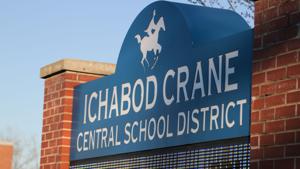




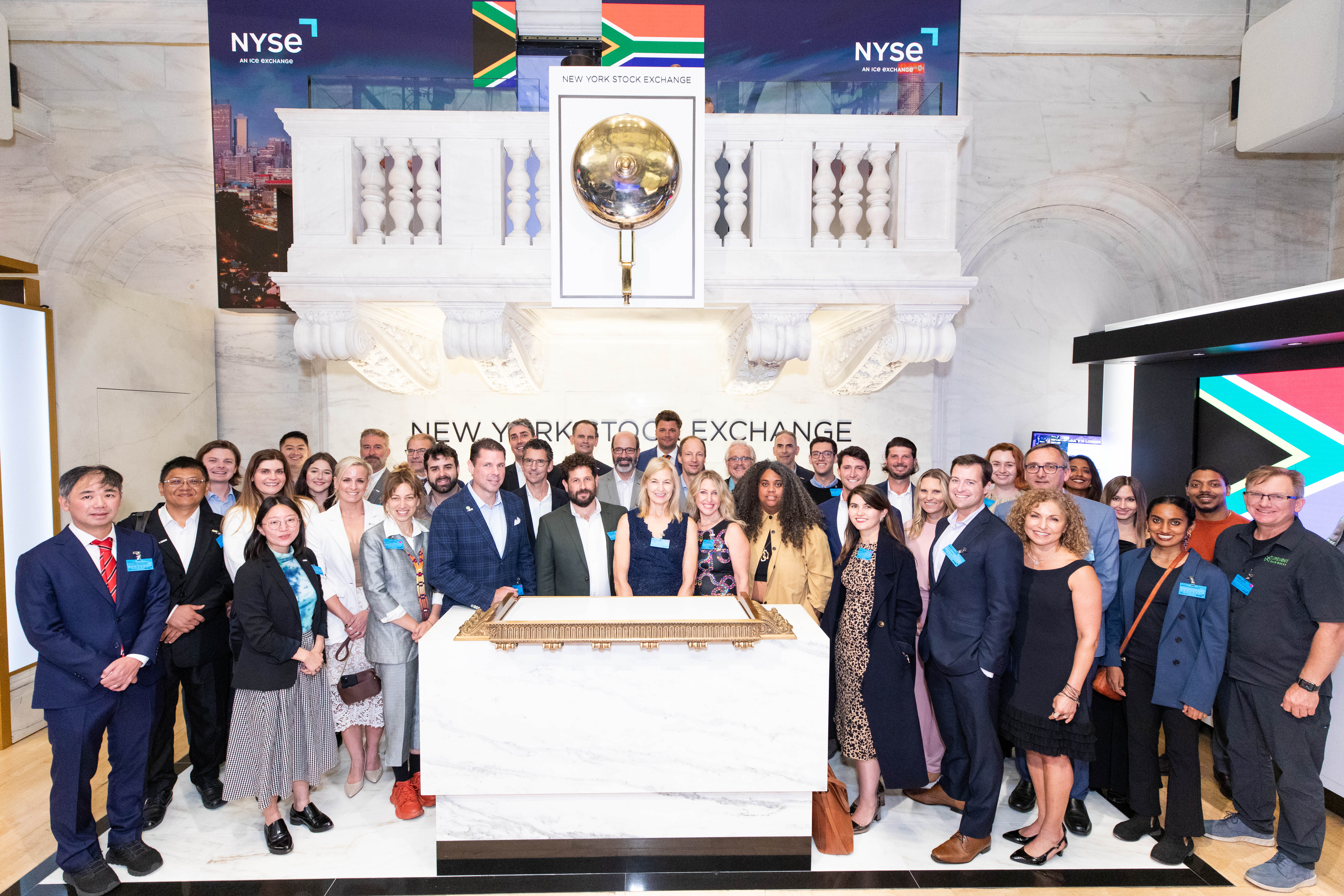

 philippine superhero
philippine superhero





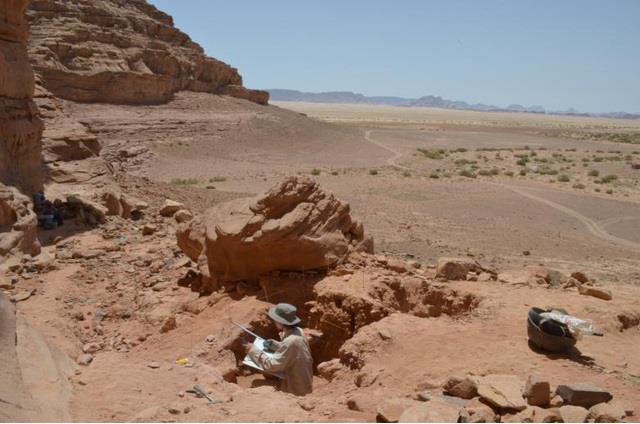

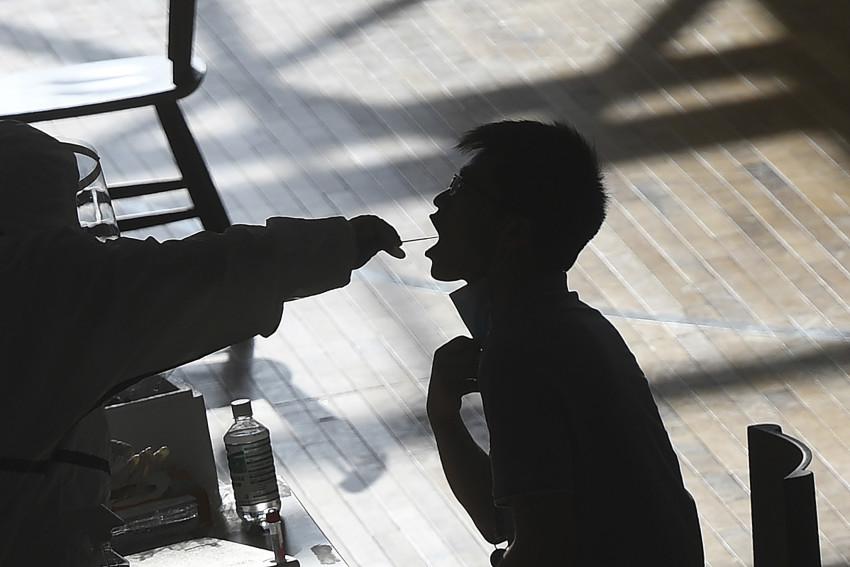

 super 8 napindan
super 8 napindan
/cdn.vox-cdn.com/uploads/chorus_asset/file/24957516/236811_WIFI7_CVirginia_1.jpg)


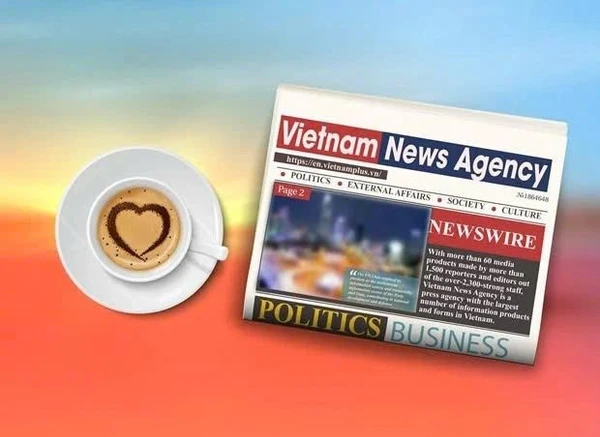

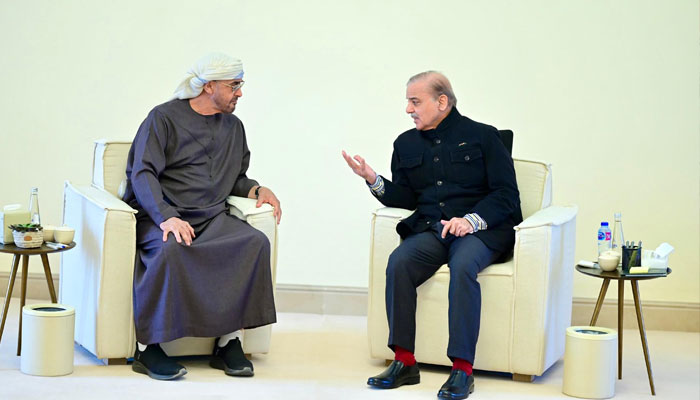


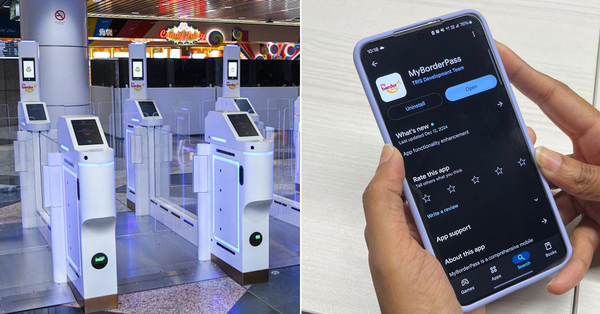
 super wallpaper saturn
super wallpaper saturn





 superph club login
superph club login



